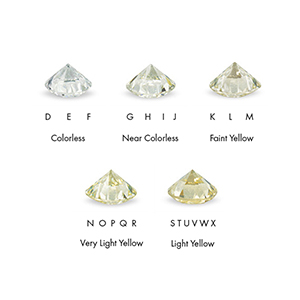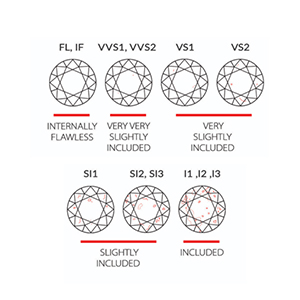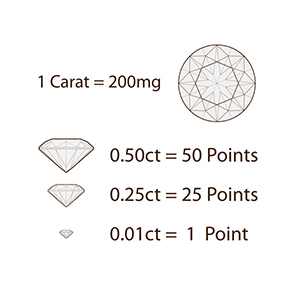Cut refers not to a diamond's shape (e.g. round, oval, pear, etc.) but to a diamond's proportions, symmetry and polish. The beauty of a diamond depends more on cut than any other factor. Diamond cut has major effects on appearance: BRILLIANCE (the brightness due to the reflection of white light from the surface and the inside of a polished diamond), FIRE (the dispersion of light into the colours of the visible spectrum, seen as flashes of colour). The diamonds with an excellent cut in proportions, symmetry, and polish gives both brilliance and fire in them.

The diamonds are graded on a scale of D (colorless) to Z (light color). These diamonds are distinguished on the basis of (white or colorless) BRILLIANT WHITEto PALE YELLOW. The degree of yellow tinge present reduces the grade of color. The less body color in a white diamond, the more true color it will reflect, and thus the greater its value.

Diamonds are formed deep within the earth, under extreme heat and pressure; virtually diamonds contain small imperfections inside the diamond (called inclusions), or on its surface (called blemishes). Clarity refers to the degree to which these imperfections are present. Most diamonds are graded from FLAWLESS(FL) to HIGHLY INCLUDED (I3) Lower the imperfections present, higher the clarity of diamonds.

Diamonds are measured by the carat (shown as ct.), which is actually a unit of weight, and not in terms of size. The word "carat" comes from the "carob" seed, which is used in measuring the weight of diamonds in the ancient days. One carat (1.00 ct) is equivalent to one fifth the gram (0.200 g).
